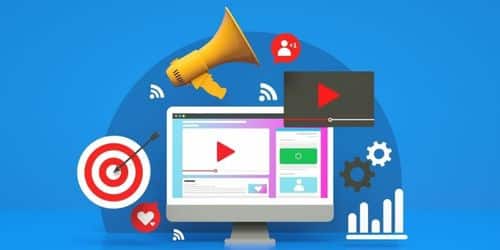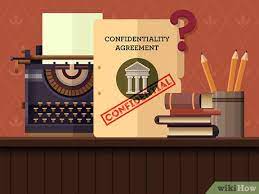Whether you’re targeting existing or new clients, successful marketing initiatives can help raise brand awareness. Digital marketing campaigns, social media marketing, influencer marketing, video marketing, email marketing, and other methods are included in these campaigns. Small business owners should concentrate their efforts on developing a successful marketing campaign plan for their brand. Here, we have outlined how marketing campaigns work, with examples that’ll serve as a guide when creating your own marketing campaign strategy.
What Is a Marketing Campaign?
Marketing campaigns promote items via various forms of media, including television, radio, print, and online platforms. Campaigns can incorporate demonstrations, video conferencing, and other interactive approaches in addition to advertising. Businesses and franchisees in highly competitive sectors may launch frequent marketing efforts and commit large resources to increase brand awareness and sales.
What is a Marketing Campaign Plan?
A marketing campaign plan is essentially a road map that spells out everything needed to carry out a marketing campaign.
As a result, a solid marketing campaign plan will often include a set of marketing goals and objectives, a marketing strategy to achieve them, and marketing strategies to put everything into action.
It also serves as a roadmap for the entire marketing team on how to achieve campaign goals and keeps everyone on the same page.
If you think this whole thing is worthless or not worth your time, what we’re about to tell you will change your mind:
Why Should You Make a Marketing Campaign Plan?
Being unprepared is not a risk you want to take in the marketing world. That is why it is always a good idea to have a plan in place. Let’s look at some of the reasons why you should prepare a marketing campaign:
#1. It provides guidance
The benefit of having a plan is that it informs us what to do, how to do it, and when to do it. A marketing campaign plan helps to focus all of your efforts.
Proper instructions and guidance ensure that all of your staff are aware of what they must accomplish and how they must accomplish it. This avoids overlapping and inefficient activities and increases your team’s efficiency!
#2. It lowers risks
When you set out to do something, there will always be obstacles in your path that want to knock you down, and plans are a fantastic method to anticipate these unforeseen scenarios and uncertainties.
Planning ahead of time allows you to anticipate potential problems and prepare for them, lowering the likelihood of hazards influencing your efforts. You will always be one step ahead if you have a marketing strategy plan!
#3. It promotes creative thinking.
This has to be the most enjoyable aspect of developing a marketing campaign strategy. The planning stage is where everyone puts their heads together to come up with new and innovative campaign concepts.
You are urged to think differently and come up with new strategies to differentiate your campaign from all other firms while creating goals and anticipating future conditions.
Now that we’ve established that a marketing campaign plan is critical for your marketing campaign, let’s look at how to create one!
How to Create the Ideal Marketing Campaign Plan
#1. Determine Your Target Audience
You don’t want to spend all of your time and efforts on an audience that isn’t interested in your goods.
That is why, before you begin developing a strategy, you must first determine your target population to whom your product would be relevant.
It is your responsibility to determine your target audience and learn about their primary interests. This can be accomplished by looking at your present client base or listening to what people are saying on social media.
Find the correct audience, and then figure out how to reach them!
#2. Establish Goals and Objectives
Goals and objectives are the most crucial step in any process since they form the cornerstone of every plan.
Consider your goals: do you want to raise brand awareness, produce more leads, or nurture existing customers?
Begin your marketing campaign plan by establishing realistic and detailed targets that you aim to attain by the end of your campaign.
#3. Create Marketing Campaign Concepts
After you’ve defined your target demographic and established your goals, the following stage is to come up with unique, value-driven marketing campaign ideas.
Consider previous campaigns you’ve undertaken and why they were successful. You should also research your competitors and their strategies to gain a better understanding of how to differentiate your marketing strategy.
#4. Decide on Marketing Channels
After you’ve decided on your campaign ideas, the next step is to choose your campaign’s media platforms. This specifies how you want your campaign to be publicized.
Internet marketing, social media marketing, email marketing, advertisements, influencer marketing, and many more possibilities are available to you.
You can even mix various marketing channels to create an integrated marketing campaign!
#5. Create an Offer
Your marketing campaign strategy should pique the attention of your target audience in your brand. This means that your campaign should have a crucial message or an incentive, as well as a call-to-action that is meaningful to your target demographic.
You may give a free trial, a limited discount, an e-book, or even a free webinar, depending on your product or service.
Just make sure that anything you provide your audience corresponds to the action you want them to do after your campaign!
#6. Determine the Resources Required
When developing a marketing campaign plan, you should have a good concept of all the resources you will require for your campaign.
You should consider whether you require freelancers or an outside agency to help with your campaign or if your in-house team can handle it.
You should also make a list of all the specific creative assets you’ll need, such as files, movies, and equipment, and where you’ll receive them.
#7. Calculate Campaign Metrics
Campaign metrics are a quantitative measurement of your campaign’s effectiveness.
In a marketing campaign plan, you must estimate the campaign KPIs so that you can make an educated guess about how much money you will need to spend and analyze your return on investment (ROI).
Even if it is not totally correct, you can estimate response rates, conversion ratios, and overall income to be generated.
#8. Develop a Budget
Once you have your campaign metric estimations, explain the campaign’s financial requirements, which may be utilized to develop a marketing campaign budget.
You may calculate your total profit from the campaign by subtracting the total cost of items from the total income.
Examples of successful marketing campaigns
While developing a marketing strategy is a significant job, it may yield enormous benefits if done correctly. Here are some marketing campaign examples that successfully reached their target audiences and persuaded customers to act.
#1. Domino’s.
There are about 290 million smartphone users in the United States. To be successful, brands must reach people through their phones.
Domino’s has been able to engage not only mobile users but also those using tablets or laptops—basically any mobile device where consumers can download its loyalty rewards program app and create a Pizza Profile—via its “Piece of the Pie Rewards” program. Every customer who spends $10 or more on an order earns 10 points. When they reach 60 points, they can exchange them for a free medium two-topping pizza.
While pizza fans are tempted by the prospect of a free supper, the success of the advertising campaign and reward program is about more than freebies. It is driven by client engagement and continuous app usage. Other than earning pizzas, Domino’s seeks creative methods to connect with customers.
In 2019, for example, the firm introduced its “Points for Pies” campaign, in which consumers were invited to share an image of a pizza (frozen, homemade, or produced by Domino’s or another pizzeria) in exchange for loyalty points. This not only allowed the corporation to intelligently maintain its relationship with the app’s users, but it also allowed it to acquire an enormous quantity of relevant data.
#2. Apple
In 2014, Apple introduced its “Shot on iPhone” marketing campaign to highlight the phone’s camera. While the campaign emphasized the iPhone’s high-tech advantages, it used an old-school medium to show how photographers all over the world were using its powerful camera system: billboards.
Apple asked customers to share images taken with iPhones on social media with the hashtag #ShotoniPhone, relying on user-generated material. The organization has gotten millions of contributions on Instagram and Twitter since its inception.
To promote iPhone technology, the best images have been blown up and shown on billboards, skyscrapers, and other large-scale, outdoor public locations around the world. The successful concept shows no signs of stopping down, with calls for images to commemorate certain themes, events, and movements.
#3. Coca-Cola
The effective “Share a Coke” marketing campaign, first launched in Australia in 2011, coincided with the beverage manufacturer updating its packaging to read “Share a Coke with…” Coca-Cola aimed to build more personal relationships with younger consumers and inspire them to spread their enthusiasm for the brand to others.
The top 150 names in Australia were printed on Coke bottles, and the campaign was so successful that it spread to other nations across the world. The campaign has developed over time, with the brand now delivering bespoke alternatives based on user-generated content.
In Israel, people were greeted by name on interactive billboards. In China, the corporation allowed consumers to print nicknames on bottles, personalizing the marketing effort for soda users. Coca-Cola took the idea a step further in 2016 with its “Share a Coke and a Song” campaign, which featured song lyrics emblazoned on drink bottles.
How to Run a Profitable Email Marketing Campaign
An email marketing campaign is a series of emails delivered by a company to one or more clients or prospects. An effective email marketing campaign will compel users to act, engage with your company, and help you generate more leads and sales.
One of the major benefits of email marketing is that people still use email. As a result, email marketing is an excellent tool for developing client relationships and generating leads and sales.
But, before you can conduct a successful email marketing campaign, you must first prepare so that you are ready to send that first email.
#1. Create a Specific Email List
The most effective email marketing campaigns begin with a list of qualified prospects who are interested in what you have to offer. Converting website visitors into subscribers is the most effective strategy to establish a focused email list.
But did you know that on average, 80% of your website visitors will depart without subscribing to your newsletter?
That is why we propose using exit-intent popups to convert visitors who are about to leave into subscribers and customers.
Exit-intent popups track user behavior and present them with a tailored campaign just as they are about to leave your site for good. This clever technology has the potential to significantly increase your conversions.
#2. Determine Your Goal and Objectives
Setting goals is the foundation of any excellent marketing, and email marketing is no exception. Consider what you want to achieve before launching an email marketing campaign. Typical email marketing campaign objectives include:
- Welcome new subscribers and tell them about your company and principles to begin building a relationship with them.
- Increasing interaction with your content and your business, whether you’re marketing a webinar or making your first sale.
- Maintaining existing subscribers by giving them something they’ll appreciate.
- Re-engaging subscribers who haven’t been active in a long time.
- You may segment your subscribers to send more targeted email marketing messages.
- You can also align your email marketing goals with your conversion goals.
#3. Understand Your Audience
If you’ve been doing email marketing for a while, you’re probably aware of who your target audience is. If you’re just starting out, you’ll need to make some educated judgments in order to target your content. Don’t worry; you’ll begin gathering subscriber information the moment you send your first campaign, so you’ll have genuine data to work with the next time.
Meanwhile, collect information from Google Analytics and your social media profiles, such as the Facebook Insights data displayed below:
Both sources offer demographic, geographical, and interest data, as well as a slew of other metrics that will give you a sense of who your consumers are and what they’re interested in. That’s an excellent place to start when creating effective email marketing campaigns.
#4. Optimize Technology
The top email marketing services have tools that will assist you in creating more successful email marketing campaigns. Look for features such as:
- Simple campaign creation and automation, with templates and workflows included.
- Integrations with existing software, such as WordPress and OptinMonster.
- Methods for segmenting your audience.
- Comprehensive analysis of email marketing performance.
#5. Create Excellent Opt-ins
It goes without saying that in order to execute a successful campaign, you must first build your email list.
To accomplish so, you’ll need to design eye-catching opt-in forms that entice users to join up. Experiment with several types of opt-in forms on various places of your site, such as:
Welcome gates that appear when visitors arrive at your website. You can also utilize our page slide feature to direct folks to the information when they are ready.
Lightbox popups can display on any website and momentarily hide the rest of the content in order to focus on the optin. These convert extremely well.
Exit-intent popups display when a user is about to leave a website. That is an excellent time to present your lead magnet.
Put optins in many places and control how they appear with rules and page-level targeting for the greatest results. This reduces the level of discomfort while maintaining effectiveness.
#6. Create a Subject Line
The subject line, which is vital in encouraging people to open and click your emails, is a solid beginning point for any effective email marketing campaign. An email subject line, like the headline of your blog article, must catch people’s attention and entice them to read on.
You also don’t have a lot of words to make an impression; according to Campaign Monitor data, most subject lines vary from 41 to 50 characters. Because mobile screens display even less of your subject line, it’s best to place the most crucial elements first.
Subject lines can be improved by telling readers what they’ll get when they open your emails; there’s no need to be clever or humorous unless that’s your brand’s personality.
Personalization, such as inserting people’s names in the topic line, can increase engagement.
Avoiding spam trigger phrases so that your emails reach the inbox.
Adapting one of these high-converting email subject lines for your own use.
#7. Compose the Copy
It’s now time to craft your email marketing copy. You should start with a hook that will entice readers to continue reading.
Keep email marketing copy short and avoid pushing your offer too early for optimal results. You want folks to feel at ease first.
Subscribers should be addressed by name. Personalized emails are more effective. Buffer also recommends personalizing your emails depending on need by sending emails that satisfy a variety of user expectations. This makes them more targeted and likely to succeed. According to certain research, educating and segmenting your audience can increase your email click-through rate by up to 50%.
#8. Concentrate on Email Marketing Design
Email design is critical to the success of any email marketing campaign. If your emails appear ugly, it reflects poorly on you and may cause readers to quit reading. With more people reading emails on mobile devices than ever before, it’s critical to utilize a responsive email template so that your email automatically resizes whether people are reading it on a phone, tablet, or desktop.
The majority of good emails contain more text than photos. There’s no doubt that graphics make your email more visually appealing, but keep in mind that many consumers disable images. That implies your emails must continue to function even if recipients are unable to view them.
Avoid hiding information in photos, as this is terrible for email accessibility. Remember to use alt tags to explain photos so that folks who have them disabled may see what they’re supposed to see. A decent description may persuade users to allow photos, making your emails appear even better.
#9. Tracking and testing
Finally, sending an email is only the first step toward email marketing success. To really nail it, you must collect data in order to better future ads.
That includes design and style, email marketing copy, subject lines, and calls to action. Consider testing emails with various portions as well as playing with email send times.
You should also keep track of email analytics from your service provider, such as opens, clicks, unsubscribes, and forwards. This will allow you to determine what works and what doesn’t with email marketing.
Another thing to keep an eye on is your sender’s reputation, which has an impact on email delivery. Use Sender Score to check for any red flags that may prevent your emails from reaching your subscribers’ inboxes.
Finally, manage your email list by seeking to re-engage inactive subscribers and eliminating them if your efforts fail. Fewer active subscribers are better for email marketing open and click rates than a big number of inactive ones.
In Conclusion,
Marketing campaigns promote items via various forms of media, including television, radio, print, and online platforms. If you want to create a successful marketing campaign for your company, consider hiring an expert who can assist you in determining your firm’s aims and audience in order to build a message that has a meaningful impact.
Related Articles
- CAMPAIGN MANAGEMENT TOOLS: Free Tools and Application
- Best 15 Marketing Software For Small Businesses In 2023
- SMALL BUSINESS EMAIL MARKETING: Meaning, Best Email Marketing Software, and Tips
- Top Email Marketing Platforms: 15+ Best Picks For 2023 (Updated!!)
- Best Email Marketing Campaign Examples (+ Detailed Guide)






